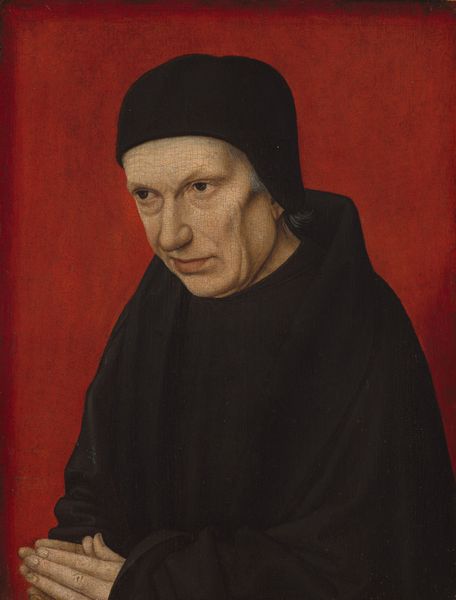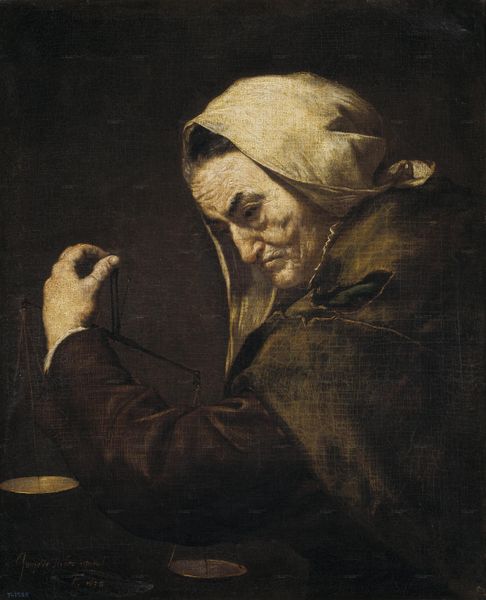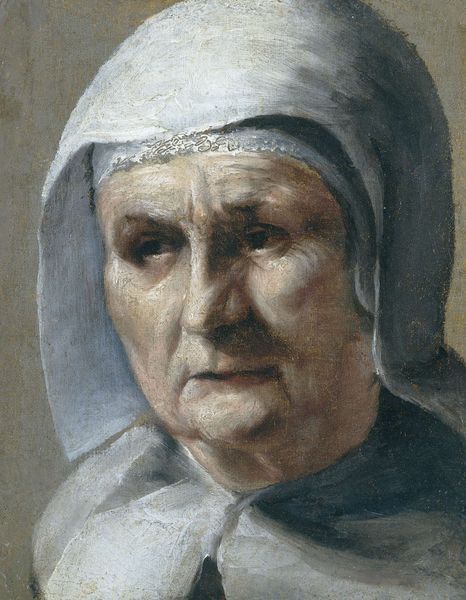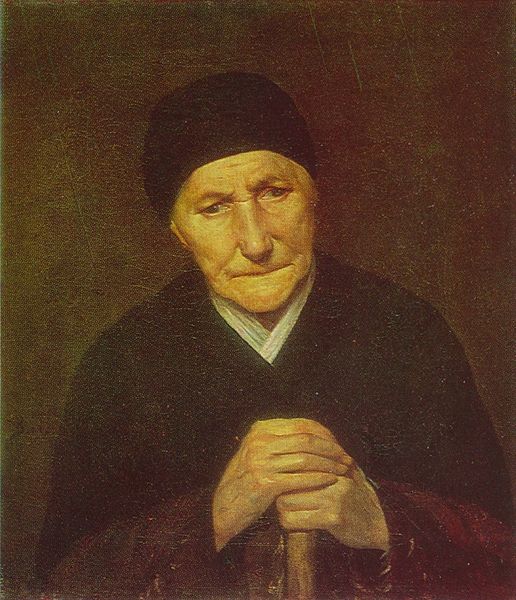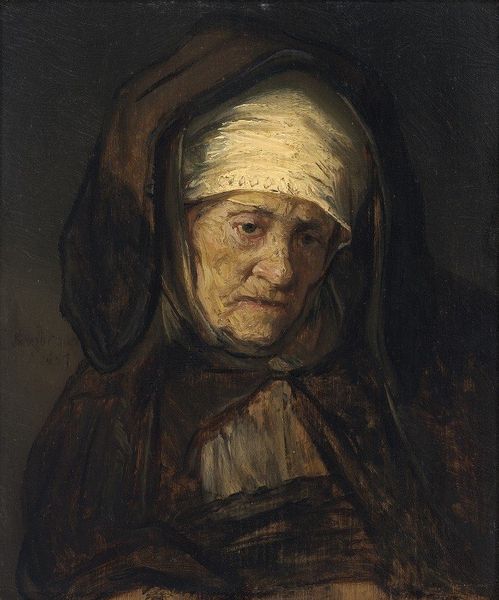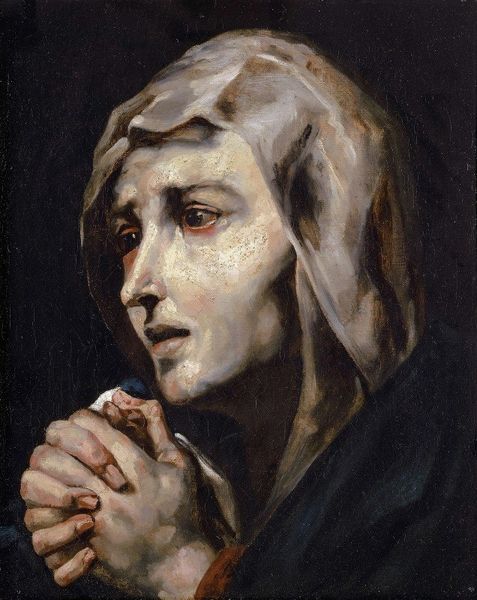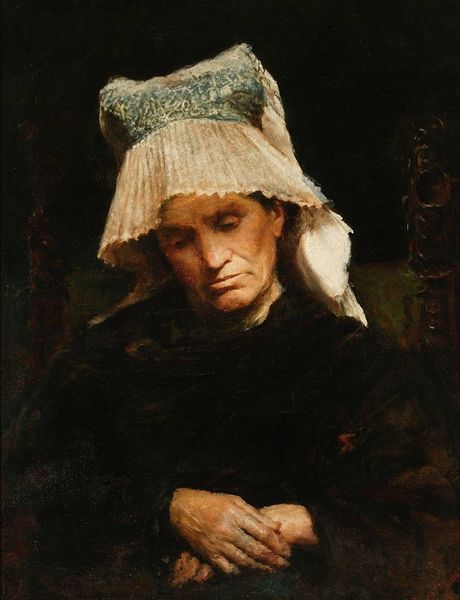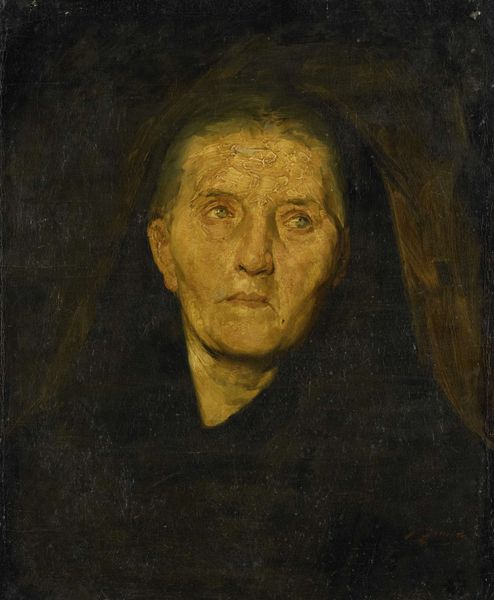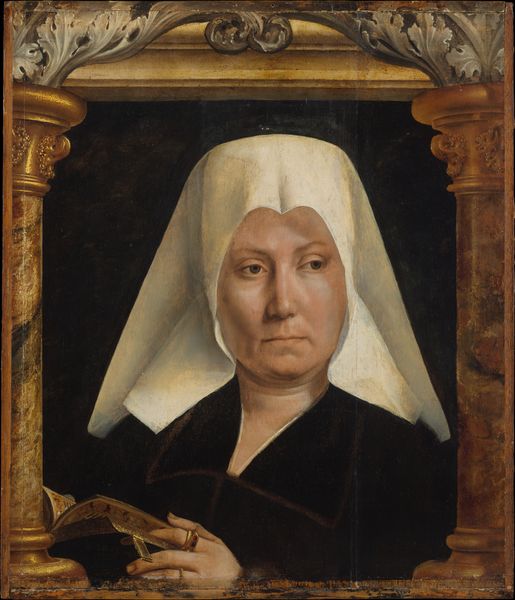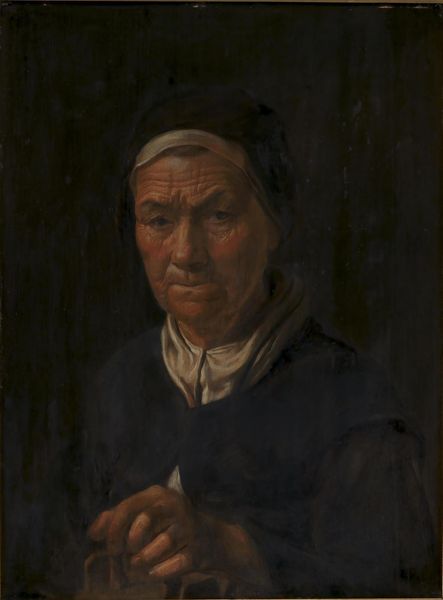
Copyright: Public Domain: Artvee
Editor: Jules Lefebvre’s "An Elderly Greek Woman," painted in 1888 with oil paints, really strikes me. There's a stillness, a quiet sorrow, in her eyes that's hard to ignore. How do you interpret the artist’s choice of such humble materials to depict such an evocative portrait? Curator: Consider the materials: oil paint, canvas, and pigment meticulously applied. Lefebvre’s academic realism depends on these very materials. This was not simply portraiture; it was about constructing an image that speaks to idealized, romanticized ideas of laboring-class piety and dignity that sold quite well during the time, in contradiction to social realism which came later and intended a critique of economic relations through raw depiction of labour, misery, or wealth. Editor: So you're saying the *way* he used the materials is just as important as the fact that he used them? That it relates to this intention of generating romantic sentiment around piety or destitution of the lower classes, which would generate a specific form of viewership among upper classes? Curator: Precisely. How the material and method shape the subject and its consumption. Reflect on how academic training is itself a material process that impacts how the art is constructed, not unlike factory processes or labor. We might think of this production within the artistic guild- or workshop. The academic art system has always dictated production methods as material inputs and outputs to ensure social success and status among buyers. How do you see this play out in our own time? Editor: I guess the constant churn of artworks in the market reflects how artworks became just a vessel for marketing and publicity instead of deeper sentiment, making it just a material like another! That's a completely different perspective than I had originally, thank you! Curator: And my understanding shifts with your insightful view; we’ve considered labor, raw materials, market pressures. This artwork then turns from a depiction to an active participant in social dynamics.
Comments
No comments
Be the first to comment and join the conversation on the ultimate creative platform.
